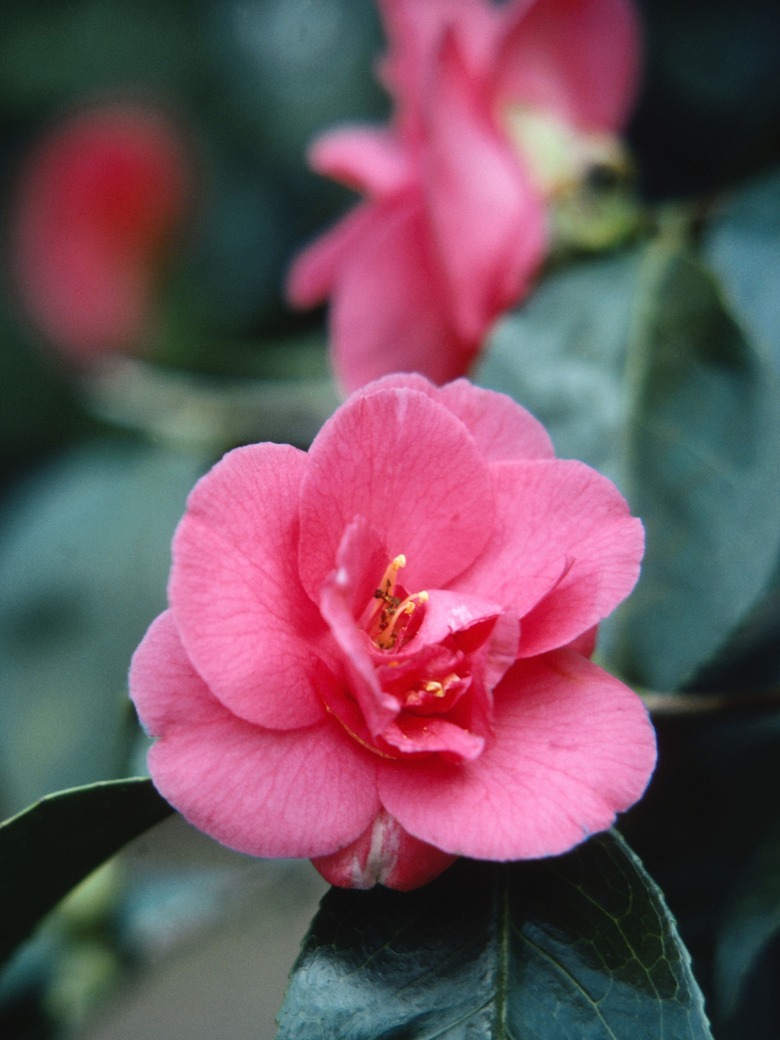What Causes Brown Spots On A Camellia Bush?
The camellia is native to Asia and there are more than 250 species of this ornamental flowering shrub, according to the American Camellia Society. Most species are grown for the flowers, which are rose-like; they may be white, pink, red or variegated. Most of the commonly cultivated camellia species are hardy to U.S. Department of Agriculture plant hardiness zones 7 through 9. Several things may cause brown spots on a camellia bush.
Camellia Flower Blight
Although the camellia is a lovely bush without flowers, it is grown for its almost-perfect blooms. When something happens to mar the beauty of the camellia's flowers, take action quickly. Brown flowers or brown patches on flowers in spring is a symptom of a fungal disease known as flower blight. After the initial symptoms — brown spots on petals, enlarging to include the whole flower — the blossoms fall from the plant, generally within 48 hours. Control flower blight by removing all infected camellia flowers, rake the garden bed of all plant debris and topdress the soil with a fresh, 3-inch layer of mulch. Spray the remaining flowers with a fungicide containing mancozeb or triadimefon, according to label instructions and precautions.
- The camellia is native to Asia and there are more than 250 species of this ornamental flowering shrub, according to the American Camellia Society.
- Most species are grown for the flowers, which are rose-like; they may be white, pink, red or variegated.
Leaf Gall
Leaf gall is another fungal disease that appears in spring. New growth has an abnormal appearance — thickened leaves and shoots — with discoloration that is green, then white or pink. As the disease runs its course, leaves turn brown and become crunchy. Remove infected leaves and shoots at the first sign of the disease, rake the bed of debris and avoid overhead watering. If the camellia comes down with the disease one year, prevent it the following season by spraying it with a fungicide containing mancozeb at budbreak. Reapply every one to two weeks, according to label instructions.
Sunscald
Camellias are shade-loving plants and too much, or too intense, sunlight may cause the plant to turn brown. If the brown parts of the camellia are those that are in direct sun, suspect sunscald. Although it doesn't kill the plant, sunscald damages the leaves, allowing fungus pathogens entry into the plant. Remove the camellia from the sunny location and plant it in an area that provides more shade, especially in the afternoon. Remove the scorched leaves with pruning shears.
- Leaf gall is another fungal disease that appears in spring.
- If the camellia comes down with the disease one year, prevent it the following season by spraying it with a fungicide containing mancozeb at budbreak.
Oedema
Oedema is a condition that occurs when the soil is excessively moist and the air is humid. The roots are absorbing more water than the plant's leaves can hold. At first, you may notice small bumps on the undersides of the camellia's foliage. As the disorder progresses, the bumps become rust-colored or brown and resemble cork in their texture. Cut back on the amount of water and the frequency of applications, especially during humid weather.
